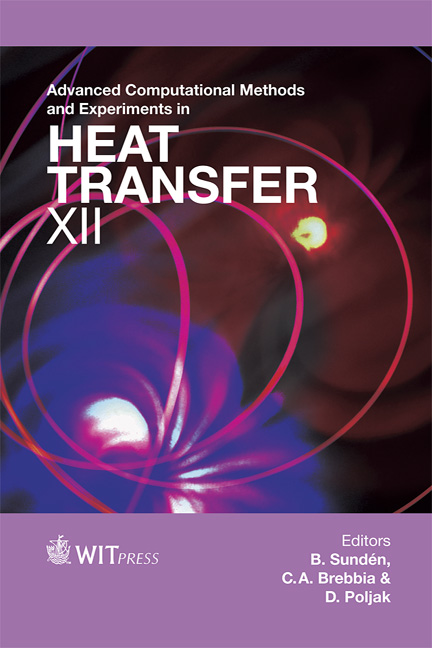Enhanced Heat Transfer Characteristics And Performance Of Composite Thermoelectric Devices
Price
Free (open access)
Transaction
Volume
75
Pages
12
Page Range
15 - 26
Published
2012
Size
741 kb
Paper DOI
10.2495/HT120021
Copyright
WIT Press
Author(s)
M. K. Chyu, B. V. K. Reddy, M. Barry & J. Li
Abstract
Thermoelectric elements made of semiconductor slices layered onto highly conducting inter-connector materials are termed as Composite Thermoelectric Device (CTED). An integrated TED (iTED) is a CTED with flow channels drilled through an inter-connector, it acts as a heat exchanger, directing the heat transfer between the fluid stream and element legs. In this work, thermoelectric performance of such elements in terms of power output P0, heat input Qh, conversion efficiency η, electric current and Ohmic and Seebeck voltages for various hot surface temperatures Th, load resistances RL and semiconductor slice sizes d has been investigated using both analytical and numerical methods. The thermoelectric performance of CTED has been compared with a geometrically equivalent conventional TED element. For an optimum load resistance RoptmL, an increase in Th showed a substantial increase in P0 and a minor increase in Qh. At Th = 550K and 350 K, the optimum η for CTED, 11% and 9% respectively lesser and nearly four-fold increase in P0 as compared to the conventional TED is observed. The semiconductor slice size d has a significant effect on the CTED performance: an observed increase in both P0 and Qh and decrease in η is a result of decreasing d. At fixed d = 5 mm and hot stream inlet temperature (450 K) values, the single-stage iTED showed five-times in P0 and two-fold in η for a flow rate Re = 500 compared to the values at Re = 100. These novel TEDs help extract larger amounts of waste heat, reduce thermal stresses and minimize semiconductor material usage as compared to conventional TEDs. Keywords: thermoelectrics, waste heat recovery, conventional, composite, integrate, analytical solutions, numerical methods, conversion efficiency, power output, voltage, current.
Keywords
thermoelectrics, waste heat recovery, conventional, composite, integrate, analytical solutions, numerical methods, conversion efficiency, power output, voltage, current.





